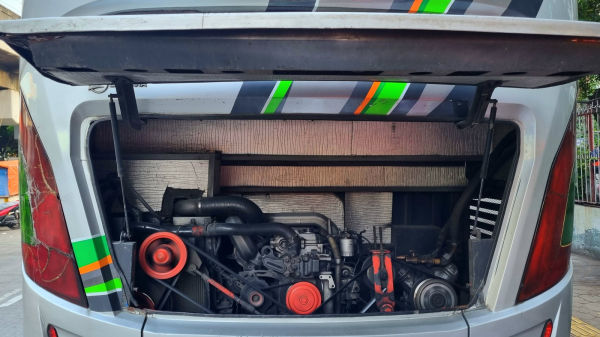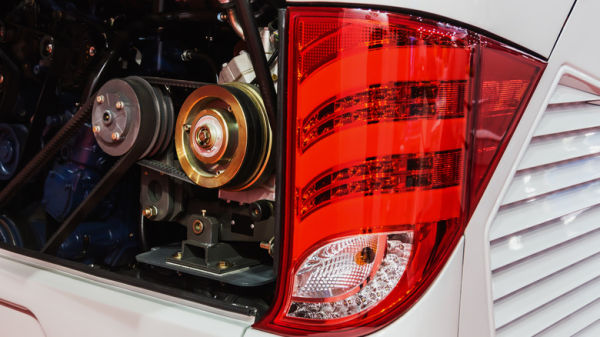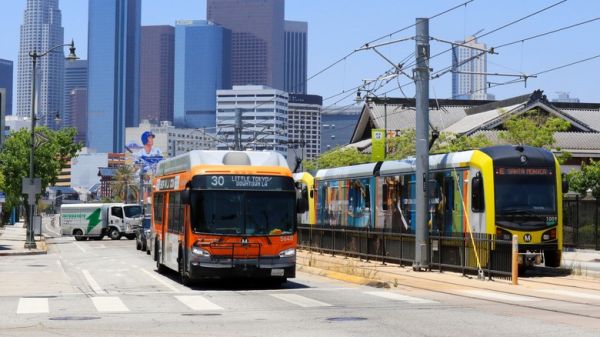City buses are a common and affordable way to travel in cities. Built specifically for navigating busy streets, city buses often feature a low-ride platform, low maximum speed, low-back seats, and dual curbside entrances. With the world shifting toward an electric future, we’ve seen the emergence of all-electric models like the Volta Zero Cargo Bus, but traditional buses still rely on internal combustion engines — and their placement is important in the handling, performance, and passenger experience.
Advertisement
Unlike most cars and trucks, which have engines in the front — or some mid-engine sports cars that balance the weight differently, city buses often feature rear-mounted engines. But the rear engine placement choice isn’t just about aesthetics. One of the primary reasons for positioning the engine at the rear is to maximize passenger space. Without a bulky engine in the front, city buses can have a flat floor, which makes entry and movement easier. While front-mounted bus engines often generate noise at the front, a rear engine creates a much quieter cabin. This reduces noise for passengers and the driver. From an engineering perspective, this layout improves weight distribution, traction, and braking performance. This makes the city bus more stable on the road, but what exactly makes this engine layout so effective?
Advertisement
Why a rear-engine placement is beneficial
A key benefit of a rear-mounted engine in a city bus is improved passenger accessibility. Front-engine buses have bulky engine compartments located near the driver’s seat. Additionally, these buses feature a higher seating position to accommodate the drive shaft that runs below from the front engine to the rear wheels. In contrast, rear-engine buses provide a flat, unobstructed entryway. This design allows for a larger passenger space and facilitates boarding and movement through the bus for all passengers, particularly those with mobility challenges. Moreover, city buses often have standing passengers, and a clear front section helps distribute space more efficiently. Furthermore, the engine’s placement at the rear enables bus manufacturers to install larger front windshields, enhancing visibility for the driver.
Advertisement
Noise reduction is another significant advantage. In front-engine buses, the driver and front-row passengers experience a lot of noise and vibrations from the engine. However, placing the engine at the rear moves most of this noise away from the cabin. This is especially important for city buses, which frequently stop and start—actions that exacerbate engine noise. With a rear-mounted engine, incorporating additional soundproofing materials in the back can help further diminish noise.
If there’s something we’ve learned from reviewing the Porsche 911 Carrera T, it’s that a rear-mounted engine enhances weight distribution and traction. This design places a significant portion of the vehicle’s weight directly over the rear wheels, resulting in better acceleration and cornering stability. This principle also holds for rear-engine city buses. The heavy engine positioned over the rear wheels improves the bus’s grip on the road, especially when loaded with passengers. Additionally, this setup enhances braking performance because, rather than shifting forward during heavy braking, the weight remains evenly distributed. As these buses don’t require long drive shafts to transfer power to the rear wheels, there is reduced power loss and increased overall efficiency.
Advertisement
Downsides of a rear-engine setup in city buses
While rear-engine placement in city buses improves performance and passenger comfort, it also comes with some trade-offs. One of the biggest drawbacks is the reduced luggage and storage space. Since the engine takes up a portion of the rear compartment, that leaves little room for storage compared to front-engine buses. This is why intercity and long-distance buses — which require more storage for passenger luggage — often favor front-engine designs. City buses, however, focus on passenger space rather than storage. This makes rear-engine placement more practical despite this limitation. Without the drive shaft, they do, however, have underbelly storage.
Advertisement
Another downside to a rear-mounted engine is the cost. Rear-engine buses are typically more expensive to manufacture and maintain than their front-engine counterparts. This is due to the complexity of the rear-mounted drivetrain, engineering required, additional cooling systems, and potentially more intricate suspension systems. Repairs are also challenging, as mechanics often need to access the engine from underneath or through specialized hatches. This can increase labor costs and make maintenance more time-consuming.
To top that off, rear-engine buses face challenges when driving on steep terrain. As mentioned, most of the weight is concentrated at the back. When going uphill, the front wheels can struggle to maintain traction. This makes them less suitable for routes with huge elevation changes. If the rear-engine setup isn’t properly designed, the heat generated by the rear engine can affect components near the back of the bus. While modern cooling systems lessen this issue, it’s still a major point that transit authorities consider when selecting bus models for specific routes.
Advertisement









